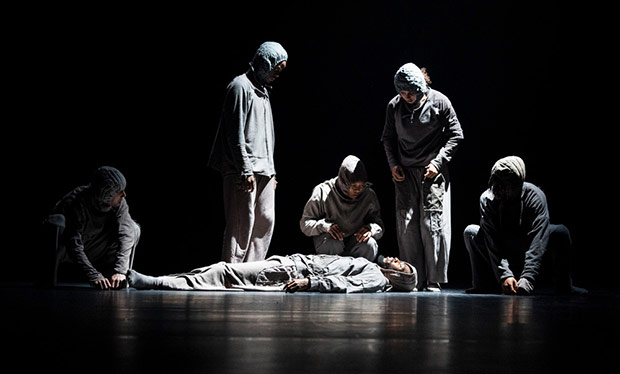
© Foteini Christofilopoulou. (Click image for larger version)
Reckonings bill
Julie Cunningham: m/y
Botis Seva: BLKDOG
Alesandra Seutin: Boy Breaking Glass
★★★✰✰
London, Sadler’s Wells
11 October 2018
Gallery of pictures by Foteini Christofilopoulou
www.sadlerswells.com
Reckonings celebrates the 20th anniversary of the reopening of Sadler’s Wells after its rebuild. Rather than commemorate previous successes, it presents three new works commissioned from emerging UK choreographers as a deliberate statement of belief in the future. For each of these it was their first production on the main stage, a big step forward. Sadler’s had priced all tickets for this at £20 and this resulted in a very buzzy, lively auditorium with a real party atmosphere.
The choreographers Julie Cunningham, Botis Seva, and Alesandra Seutin have very different backgrounds and preoccupations, but each in their way are concerned with identity. They all dig into what and who we think we are, want to be or ought to be in Britain today. There is no unified vision, but there are some fresh bright clamouring voices. There are some uneven moments, but much to enjoy and the audience had a rampantly good time.

© Foteini Christofilopoulou. (Click image for larger version)
The evening opens with Cunningham’s m/y. She is the only choreographer to appear as a performer, here with five women, and begins her work with a solo where she tentatively sketches out moves before the others join in. Cunningham’s earlier works showed a strong influence from her previous experiences as a dancer for Merce Cunningham and Michael Clark. There’s still some of that evident here, a cool, contained, pared down quality. But her own voice has become much more evident in this piece. Her inspiration for m/y is drawn from the novel The Lesbian Body by Monique Wittig.
What she is looking for is a new vocabulary for women partnering women. Here they lean on each other, hug, take one another’s weight, rest their head on another body. There’s grappling, bickering and parting too. There’s also a more playful side, running and generally larking about with a big smile visible on Cunningham’s face, in case you thought this all sounded a bit po-faced. At other moments the dancers cohere to form a group, like a shoal of fish or flock of birds, posing on one leg like elegant flamingos.
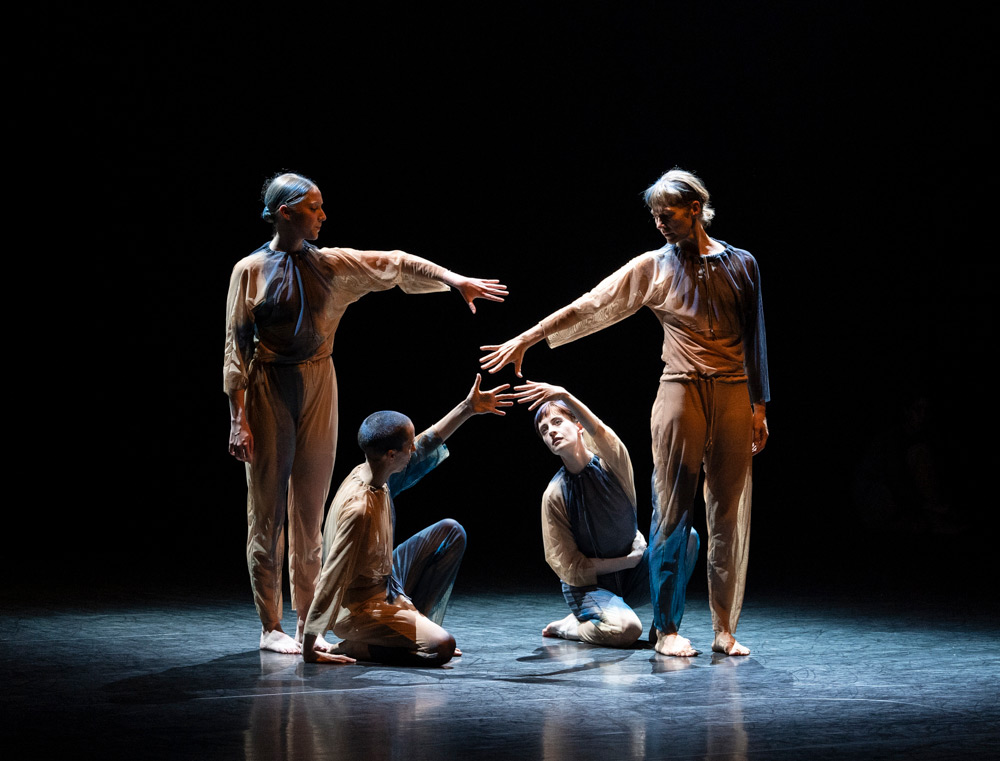
© Foteini Christofilopoulou. (Click image for larger version)
The stage design consists of what might be giant chrysalises or the cocoons of huge silkworms in blue and beige hanging up on high, and below them lengths of spun blue thread and a giant blue ball. These colours were echoed in the loose jumpsuits for the performers, dip died randomly in blue and beige. At one point the dancers produced large blue balls, passing them between one another, in a move that remained enigmatic. It’s a cool piece but well-structured and performed.
Botis Seva’s atmospheric and striking BLKDOG was a decided contrast. As it opens, six dancers are just about discernible in the gloom as the lighting rig slowly ascends. They are shadowy figures, all dressed in loose grey tops and pants, and all wear hoods. There is a voiceover of what might be a therapist suggesting we go back to the beginning. No one moves for a long time. Kids voices are succeeded by a crunching soundtrack at a volume that makes your ribs vibrate.
Seva’s background is in hip hop. But there is little overt virtuosity or showing off of moves here. The movement is meaty and powerful, yet remaining loose and liquid. There are strange scuttling walks while crouched which must be agony for the thighs. A strong pack mentality is evident and the dancers bark like dogs. There are some good jokes in the voiceover about calling a mental health helpline (“if you have multiple personality disorder press 4, 5, 6, and 7….”). It’s a bleak urban world. One guy falls as if shot, the rest huddle around him, try to revive him but then become mourners.
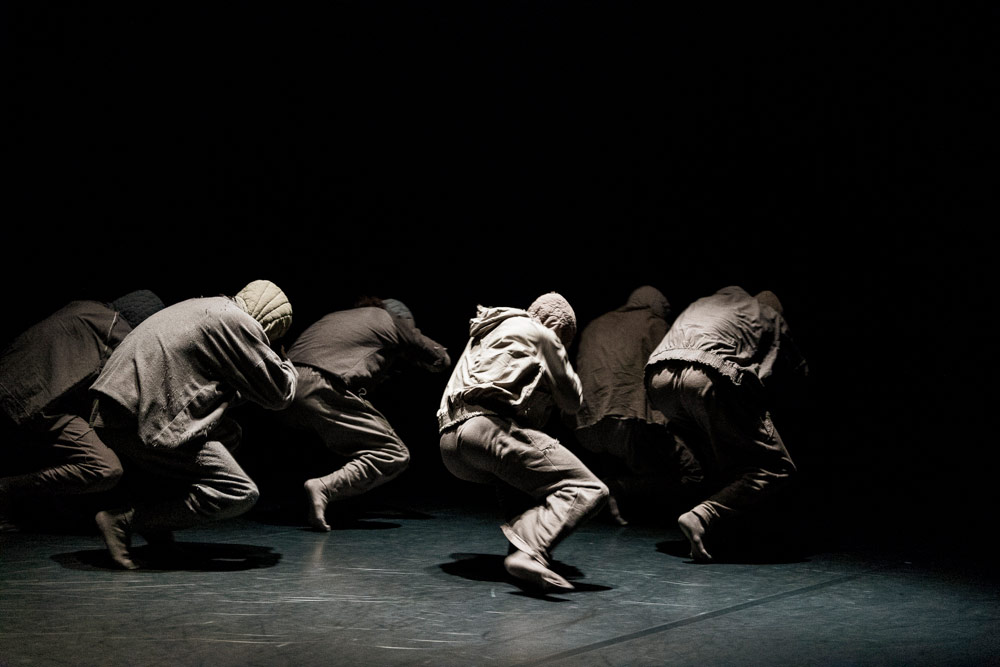
© Foteini Christofilopoulou. (Click image for larger version)
Though the work is memorable and impressive there were frustrations. All the works share the same lighting designer (Tom Visser) and the others are much more brightly lit: this deep gloom for BLKDOG is obviously deliberate. It certainly invokes an air of oppression and danger, but you can struggle to pick out detail. You might assume that all the performers are male. The cast list shows two women as participants, but the performers are so anonymised that you wouldn’t know, and the dance language is the same for all.
The performers were lit from above or from the side so that that their faces are never visible. We can see the violence and fear in this world, but the inability to see eyes and expressions keeps us remote from the characters. We are alienated and don’t fully empathise with them. Maybe that’s the point but it undercuts some of the effects Seva seems to be striving for. At the end the lighting rig descends inexorably again. There’s no escape for these people. BLKDOG was wildly popular, and despite these quibbles, we need to see more work from Seva.
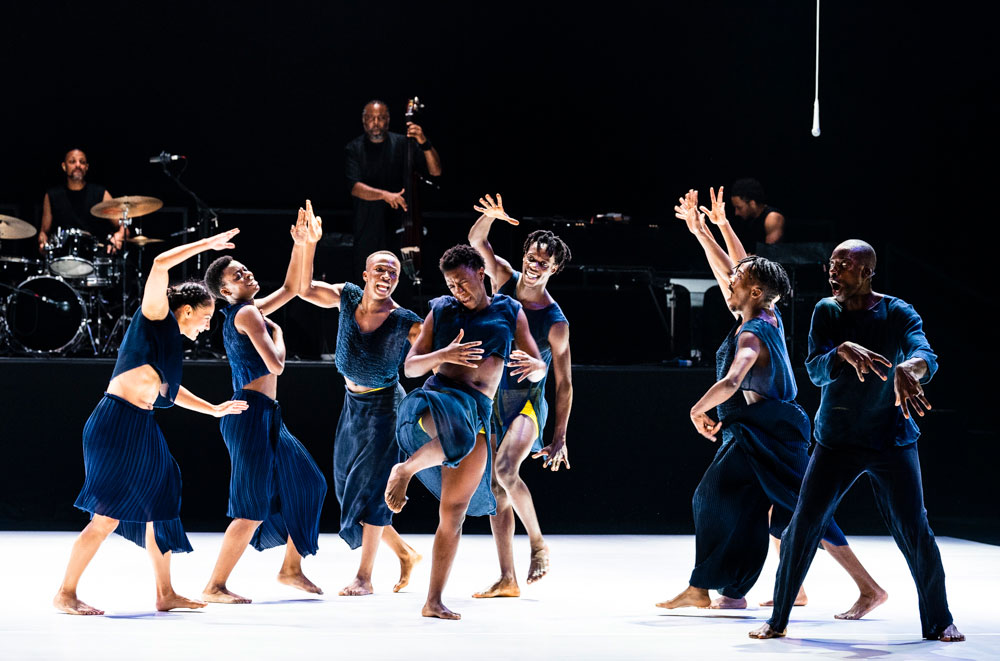
© Foteini Christofilopoulou. (Click image for larger version)
Alesandra Seutin’s Boy Breaking Glass was a good choice as the closing item, something rousing and more upbeat. It’s the only piece with live music. Five musicians on drums and percussion, piano, double bass, and cello or kora supply a blend of western and African influences. In addition, we have the tall and lanky Randolph Matthews as roving sweet-voiced vocalist who joins in the action with the dancers.
The dancers sing too, and the piece opens with lush African style chanting. Matthews is a kind of charismatic leader or master of ceremonies. This is the only time in the evening where we see men and women having a good time together, joining together in a convincing community. The dance language moves around from Europe to Africa, where the women start to explore the swing of their hips and shoulders. The mood isn’t entirely upbeat, but there are flashes of joy and exuberance that lift the spirits. But a sense of struggle against expectations may not have come across as clearly as the choreographer would have liked.
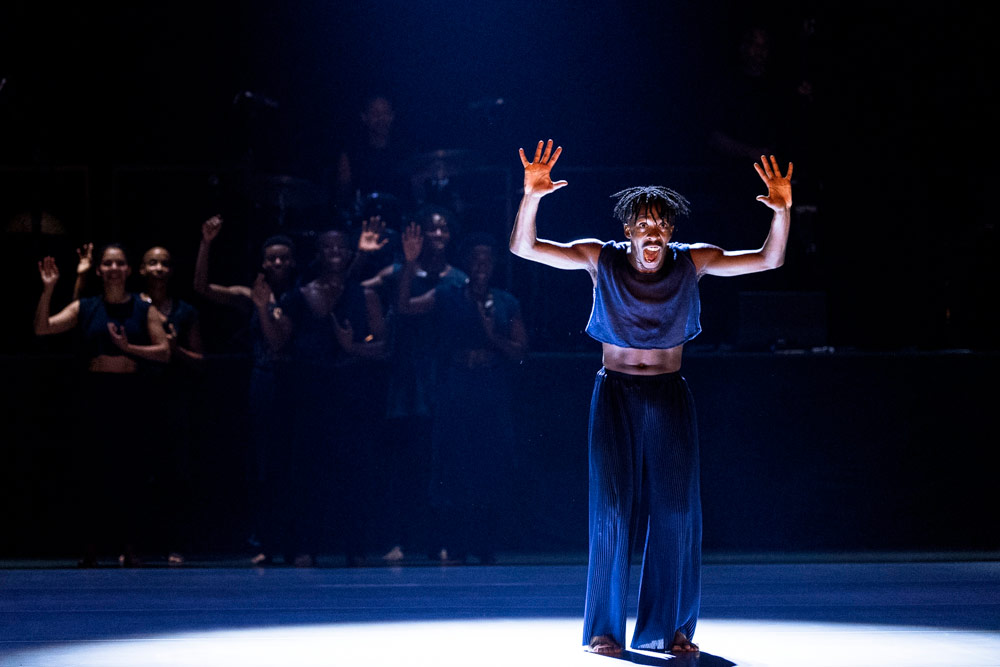
© Foteini Christofilopoulou. (Click image for larger version)
Reckonings might have sat more comfortably in Sadler’s intended new outpost, a more intimate 500 seat theatre in Stratford, still to be built, which should be a future base for the up and coming and experimental. Putting it on the main stage was a big statement of faith. All of the choreographers took up the challenge and delivered something worthwhile and the evening had a real celebratory feel. At the final curtain, Alistair Spalding, Artistic Director of Sadler’s, spoke to thank many people for the successes of the last twenty years, but his most heartfelt thanks was to the audience that supports the Wells. Ticker tape fell from the rafters to the strains of Bowie’s Lets Dance while the performers boogied and the audience yelled approval.












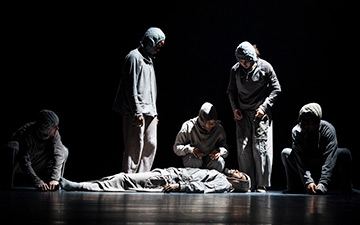
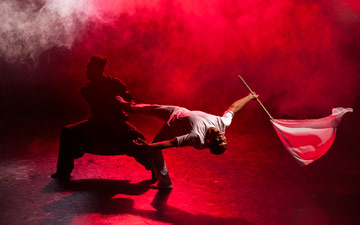


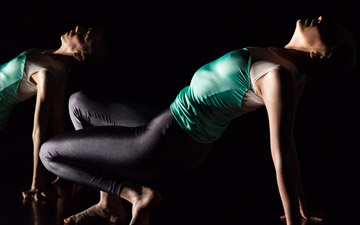
You must be logged in to post a comment.